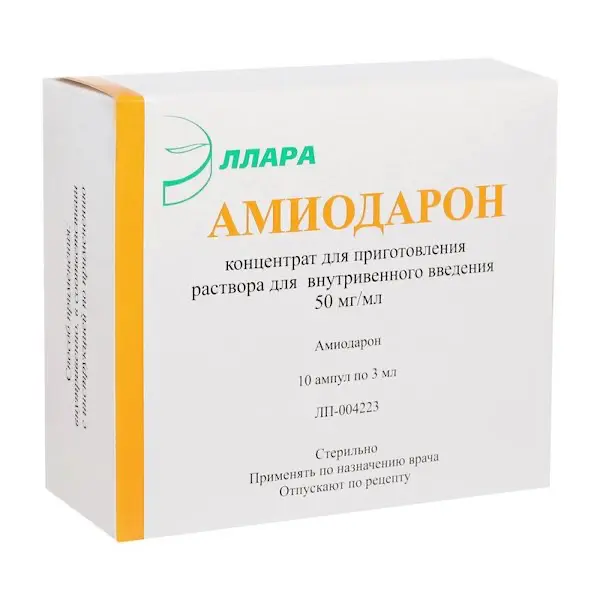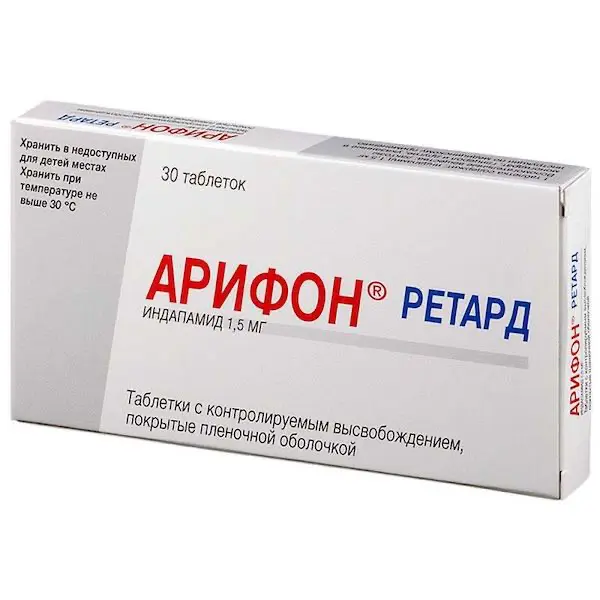Description
Pharmacodynamics
Furosemide is a fast-acting loop diuretic with a relatively strong and short-term diuretic effect. Furosemide blocks the Na + K + 2CI cotransporter located in the basement membranes of the cells of the thick segment of the ascending loop of Henle: the effectiveness of the saluretic effect of furosemide, therefore, depends on the drug getting to the tubules in the lumens through the anion transport mechanism. The diuretic effect results from the reabsorption of sodium chloride in this segment of the loop of Henle. As a result, fractional excretion of sodium can reach 35% of the glomerular filtration rate of sodium. Secondary effects of increased sodium excretion are increased urinary excretion (due to osmotically bound water) and increased distal tubular potassium secretion.
Furosemide causes dose-dependent stimulation of the renin-angiotensin-aldosterone system. In heart failure, furosemide leads to an acute decrease in cardiac overload (by narrowing capacitive venous vessels). This early vascular effect is prostaglandin-mediated and occurs with adequate renal function with activation of the renin-angiotensin system and intact prostaglandin synthesis. In addition, due to its inherent natriuretic effect, furosemide reduces the increased reactivity of blood vessels in relation to catecholamines in patients with arterial hypertension.
The antihypertensive efficacy of furosemide is attributed to increased sodium excretion, decreased blood volume, and decreased vascular smooth muscle response to stimulation with vasoconstrictors or vasoconstrictors.
The onset of the diuretic effect is observed within 1 hour after oral administration of the drug.
A dose-dependent increase in diuresis and natriuresis was observed in healthy patients treated with furosemide at a dose of 10-100 mg. The duration of action in healthy individuals is approximately 3-6 hours after oral administration of 40 mg of furosemide.
The effect of furosemide is reduced if there is an underestimated tubular secretion or interaction of the drug with albumin within the tubules.
Indications
- Edema in chronic congestive heart failure (if treatment with diuretics is necessary).
- Edema in nephrotic syndrome (if treatment with diuretics is necessary).
- Edema in chronic renal failure.
- Acute renal failure, including in pregnant women or during childbirth.
- Edema in liver diseases (if necessary, to supplement treatment with aldosterone antagonists).
- Arterial hypertension.
Contraindications
- Hypersensitivity to furosemide or other components that make up the drug. Patients allergic to sulfonamides (eg, sulfonamide antibiotics or sulfonylureas) may be cross-sensitive to furosemide.
- Hypovolemia or dehydration.
- Renal failure in the form of anuria in the absence of a therapeutic response to furosemide.
- Renal failure as a result of poisoning with nephrotoxic or hepatotoxic drugs.
- Severe hypokalemia
- Severe hyponatremia.
- Precomatous and coma associated with hepatic encephalopathy.
- Lactation.
- Pregnancy.
Dosage and administration
The dosage regimen is set by the physician individually, depending on the severity of water and electrolyte balance disorders, the magnitude of glomerular filtration, and the severity of the patient’s condition. The drug is usually used on an empty stomach.
For adults, the maximum total daily dose of Furosemide should not exceed 1500 mg.
Special dosage recommendations for adults.
For edema in chronic congestive heart failure, the recommended initial dose of the drug for oral administration is 40 mg per day. If necessary, you can adjust the dose depending on the therapeutic response of the patient. It is recommended to take a daily dose divided into 2 or 3 doses.
For edema in chronic renal failure, the dose should be carefully titrated to ensure a gradual initial loss of fluid. For adult patients, this means the administration of such a dose that leads to a daily decrease in body weight of about 2 kg (about 280 mmol Na +). The recommended initial daily dose for oral administration is 40-80 mg. If necessary, you can adjust the dose depending on the therapeutic response of the patient. The total daily dose can be administered at a time or divided into 2 doses. For patients on hemodialysis, the total daily oral dose is 250-1500 mg.
In acute renal failure , before starting the use of furosemide, it is necessary to compensate for hypovolemia, hypotension and a significant electrolyte and acid-base imbalance. It is recommended to switch from intravenous to oral administration as soon as possible.
With edema in nephrotic syndrome, the recommended initial dose for oral administration is 40-80 mg per day. If necessary, you can adjust the dose depending on the therapeutic response of the patient. The total daily dose may be administered at a time or divided into several doses.
For edema in liver diseases, Furosemide is prescribed as an adjunct to therapy with aldosterone antagonists in cases where the use of aldosterone antagonists alone is not enough. To prevent complications such as orthostatic hypotension or electrolyte and acid-base disturbances, the dose should be carefully titrated to ensure gradual initial fluid loss. For adult patients, this means the appointment of such a dose, which leads to a daily decrease in body weight of about 0.5 kg. The recommended initial daily oral dose is 40-80 mg. If necessary, you can adjust the dose depending on the therapeutic response of the patient. The daily dose can be administered once or divided into several doses.
The drug in this dosage form is prescribed for children weighing more than 10 kg. For children, the recommended oral dose of furosemide is 2 mg/kg body weight, but the maximum daily dose should not exceed 40 mg.





